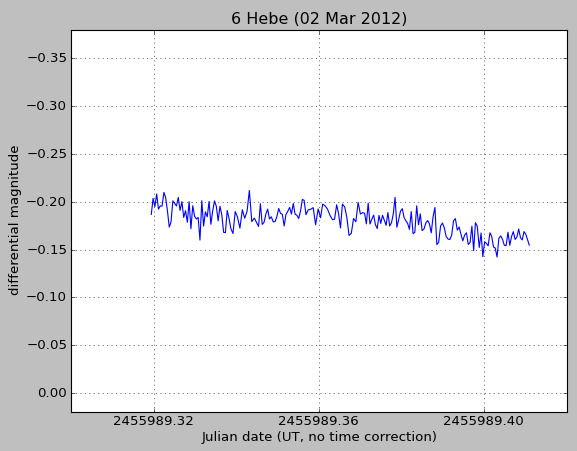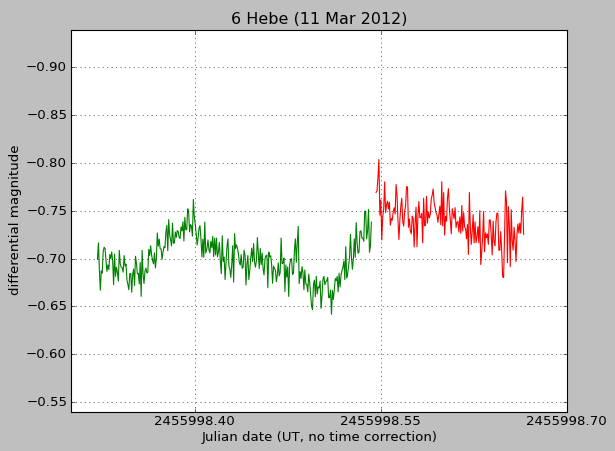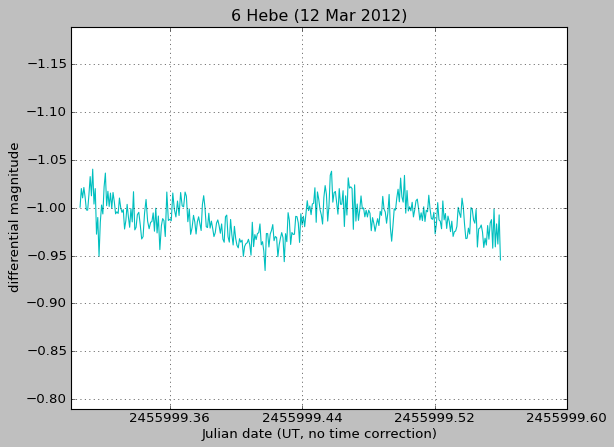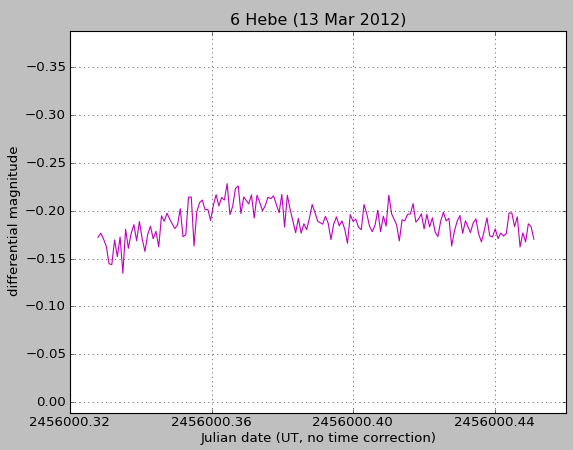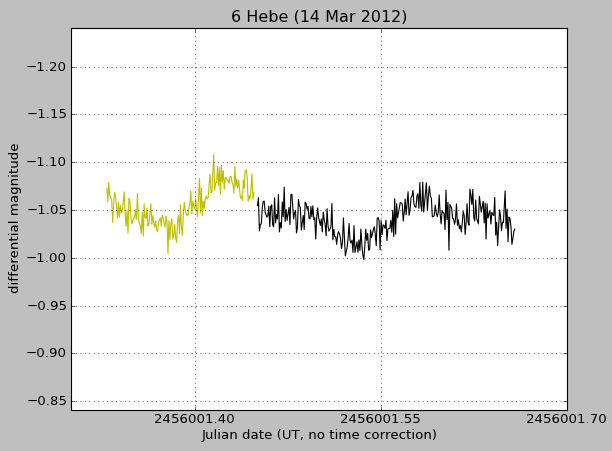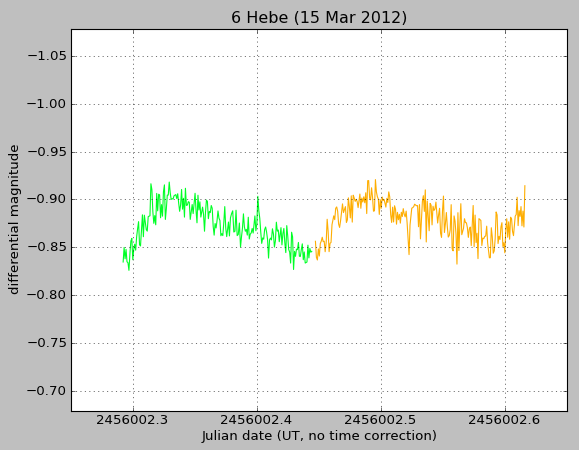(6) Hebe
From Wikipedia:
6 Hebe is a large (205*185*170 km) main-belt asteroid, containing around half a percent of the mass of the belt. Its apparently high bulk density (greater than that of the Earth's Moon or even Mars), however, means that by volume it does not rank among the top twenty asteroids. This high bulk density suggests an extremely solid body that has not been impacted by collisions, which is not typical of asteroids of its size – they tend to be loosely bound rubble piles.
In brightness, Hebe is the fifth brightest object in the asteroid belt after Vesta, Ceres, Iris and Pallas. It has a mean opposition magnitude of +8.3, about equal to the mean brightness of Titan and can reach +7.5 at an opposition near perihelion.
Hebe is probably the parent body of the H chondrite meteorites, which account for a remarkable 40% of all meteorites striking the Earth.
Link to CdR-CdL website: Click here
Results
Observation Francois KUGEL with
Magnitude during the observations: 9.5 to 9.8 |
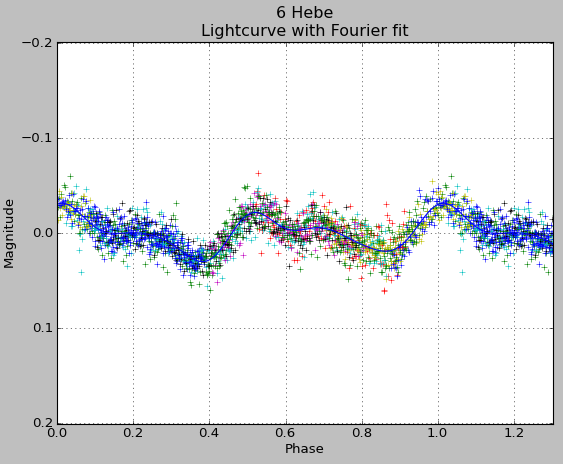
|
Searching the period
Search of best fit using 4 harmonics.Most likely period = 0.303 days, this value corresponds to the official period.
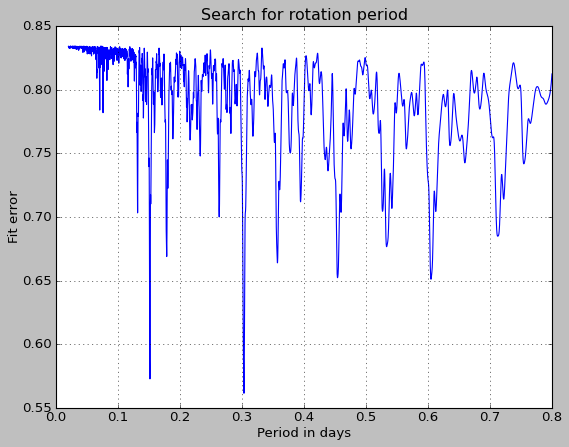
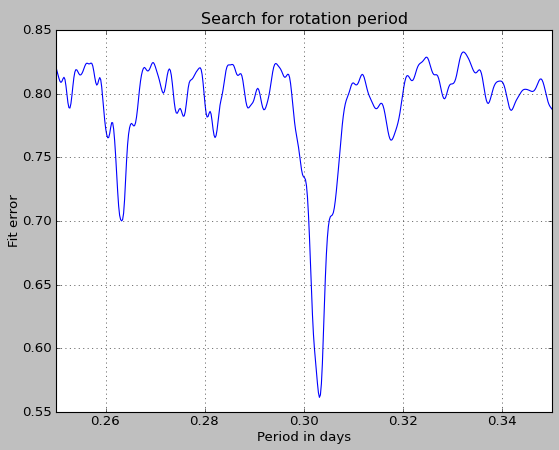
Measurements
